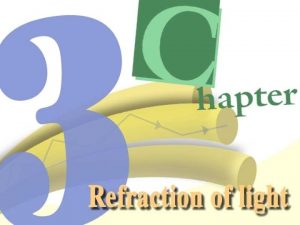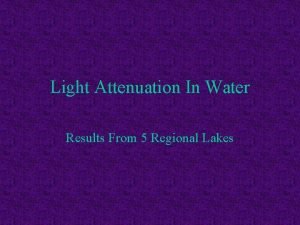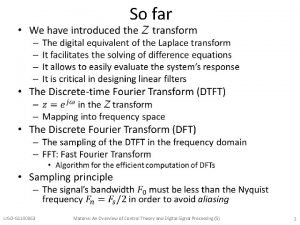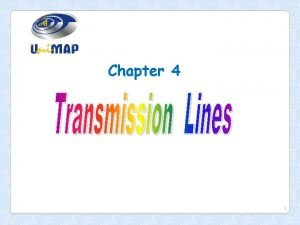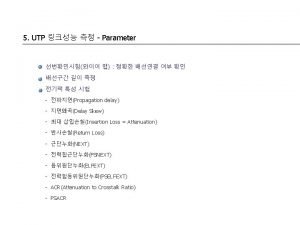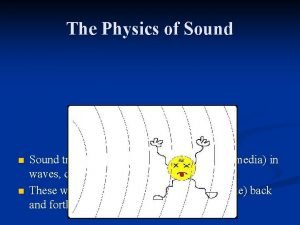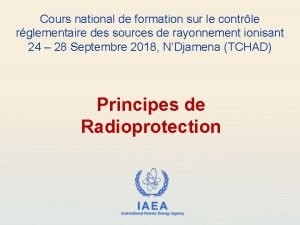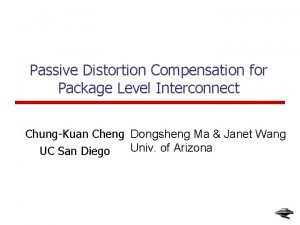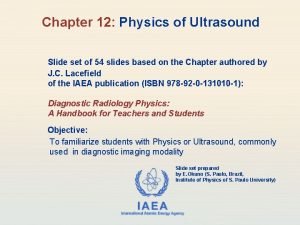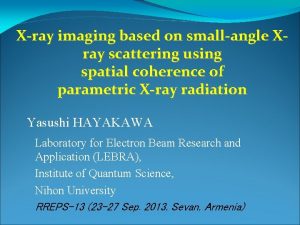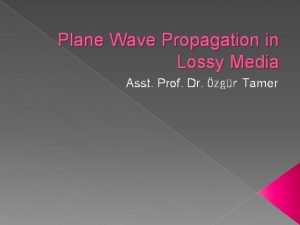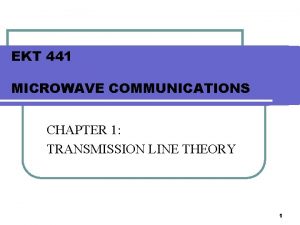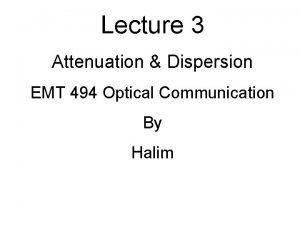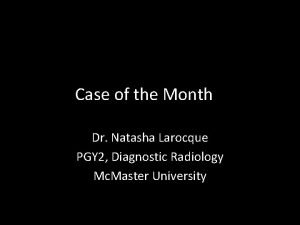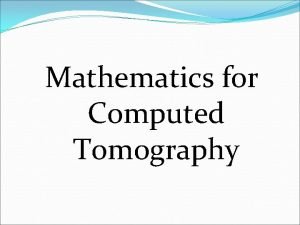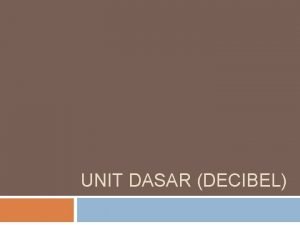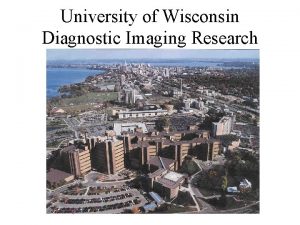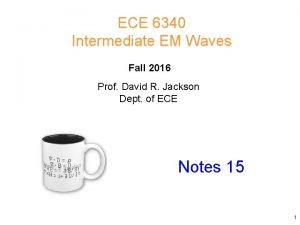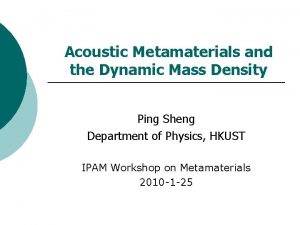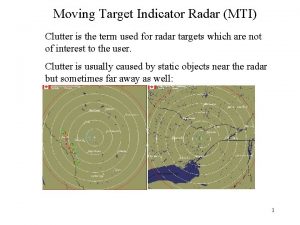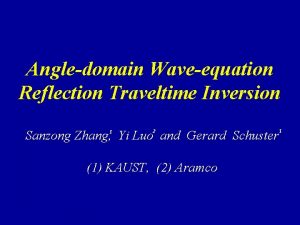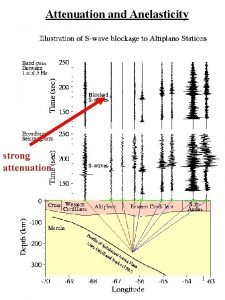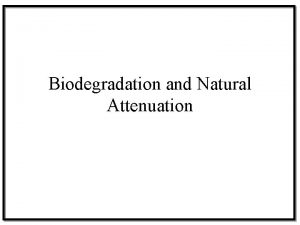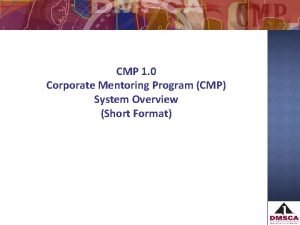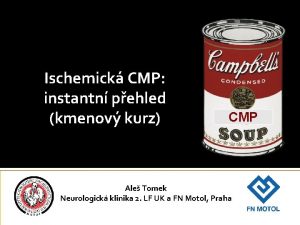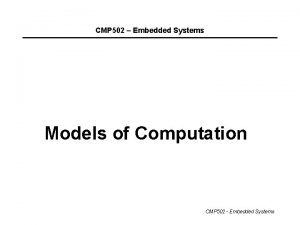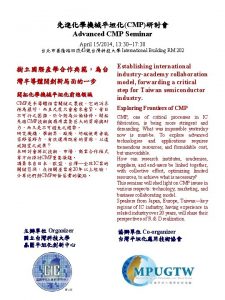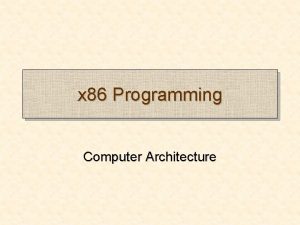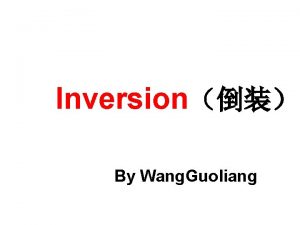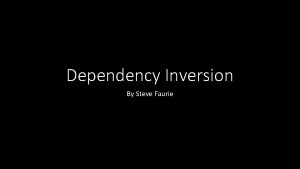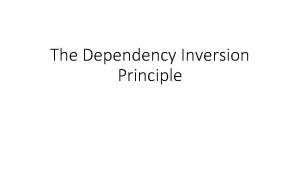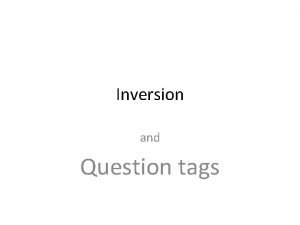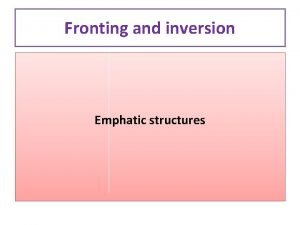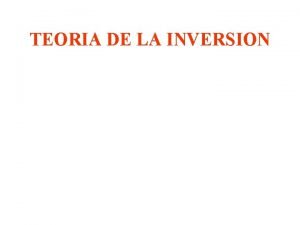Multiple attenuation prior to waveequation inversion cmp depth























- Slides: 23

Multiple attenuation prior to waveequation inversion cmp depth cmp Inversion with no multiple attenuation Claudio Guerra and Alejandro Valenciano Inversion with multiple attenuation SEP-134, p. 25

Initial considerations • Inversion is sensitive to noise – noise does not fit forward modeling – slows down convergence – dominates the residuals • Incorporate the modeling of the noise – physics explains the data • Pre-processing – data fits the physics • Multiples – not modeled by the one-way wave equation

Outline • • Linear least-squares wave-equation inversion Multiples in Sigsbee 2 b Results Conclusions

Linear least-squares wave-equation inversion • Valenciano (2008) S(m) = ½||Lm – dobs||2 ^ m = (L*L)-1 L*dobs = (L*L)-1 mmig 2 S(m)/ m 2 = L*L = H ^ Hm = mmig L – modeling operator S(m) – cost function mmig – migrated image L* - migration H – offset-domain Hessian m^ – inverse image

Linear least-squares wave-equation inversion cmp depth cmp Shot-profile migration Wave-equation inversion

Linear least-squares wave-equation inversion cmp depth cmp Reflectivity Wave-equation inversion

Multiples in Sigsbee 2 b subsurf. offset cmp depth cmp Sigsbee 2 b Sigsbee 2 a 1, 2 and 4 – peg-leg multiples 3, 5 – internal multiples. . subsurf. offset

Multiples in Sigsbee 2 b subsurf. offset cmp depth cmp ~ Hr = m mig Sigsbee 2 b 1, 2 and 4 – peg-leg multiples 3, 5 – internal multiples. . or migration artifacts (? ) subsurf. offset

Multiples in Sigsbee 2 b 0 cmp angle depth cmp 1, 2 and 4 – peg-leg multiples 3, 5 – internal multiples. . or migration artifacts (? ) subsurf. offset

Multiples in Sigsbee 2 b cmp depth cmp Shot-profile migration Diagonal of H

Multiples in Sigsbee 2 b • Multiples are more pronounced in low illumination areas – so are the migration artifacts. . . • Multiples are flat in the subsurface-offset gathers (low kh) and dipping in the common-subsurface-offset section (high k x) • Primaries are dipping in the subsurface-offset gathers (high kh) and dip in different directions in a commonsubsurface-offset section

Results • Separate primaries and multiples in the kx–kh domain – generate an estimate for the multiples -0. 04 kh 0. 04 -0. 04 kx kx 0. 04 kh 0. 04

Results • Separate primaries and multiples in the kx–kh domain – generate an estimate for the multiples subsurf. offset cmp depth cmp Estimate of multiples subsurf. offset

Results • Adapt the amplitude and phase of the estimated multiple (Alvarez and Guitton, 2006) M – estimated multiples P – estimated primaries m – parameter to balance M and P e – amount of regularization fm – matching filter for the multiple fp – matching filter for the prim A – Laplacian operator

Results • Adapt the amplitude and phase of the estimated multiple – using weights subsurf. offset cmp depth cmp Estimate of multiples + weight subsurf. offset

Results Unfiltered Filtered subsurf. offset cmp depth cmp subsurf. offset

Residuals of the unfiltered inversion Residuals of the filtered inversion cmp depth Results

Unfiltered inversion Unfiltered migration cmp depth Results

Unfiltered inversion Filtered inversion cmp depth Results

Unfiltered inversion Filtered inversion cmp depth Results

Conclusions • Multiples were characterized in the subsurfaceoffset domain; – distinguishable from primaries using dip information –. . . but not from illumination artifacts • Multiples are not predicted by the one-way modeling; • Preprocessing largely improved the inversion results; and –. . . but also filtered useful energy for inversion • Need for a more robust formulation.


Multiples in Sigsbee 2 b • Adapt the amplitude and phase of the estimated multiple – using weights subsurf. offset cmp depth cmp Sigsbee 2 b subsurf. offset
 Total internal reflection in a semicircular glass block
Total internal reflection in a semicircular glass block Light attenuation in water
Light attenuation in water Ligogram
Ligogram Transmission line
Transmission line Attenuation to crosstalk ratio
Attenuation to crosstalk ratio Ultrasound beam attenuation
Ultrasound beam attenuation Couche de demi-atténuation exercice
Couche de demi-atténuation exercice Continuity equation for time varying field
Continuity equation for time varying field Low frequency attenuation
Low frequency attenuation Ultrasound beam attenuation
Ultrasound beam attenuation Attenuation x ray
Attenuation x ray Wave propagation in lossy dielectrics
Wave propagation in lossy dielectrics How does the tryptophan operon work?
How does the tryptophan operon work? Electrical length
Electrical length What is intramodal dispersion
What is intramodal dispersion Pain attenuation definition
Pain attenuation definition Mosaic attenuation radiopaedia
Mosaic attenuation radiopaedia Linear attenuation coefficient of water ct
Linear attenuation coefficient of water ct Gain attenuation
Gain attenuation X ray attenuation
X ray attenuation Attenuation formula
Attenuation formula Low frequency attenuation
Low frequency attenuation Clutter attenuation in radar
Clutter attenuation in radar Multiple baseline vs multiple probe design
Multiple baseline vs multiple probe design
